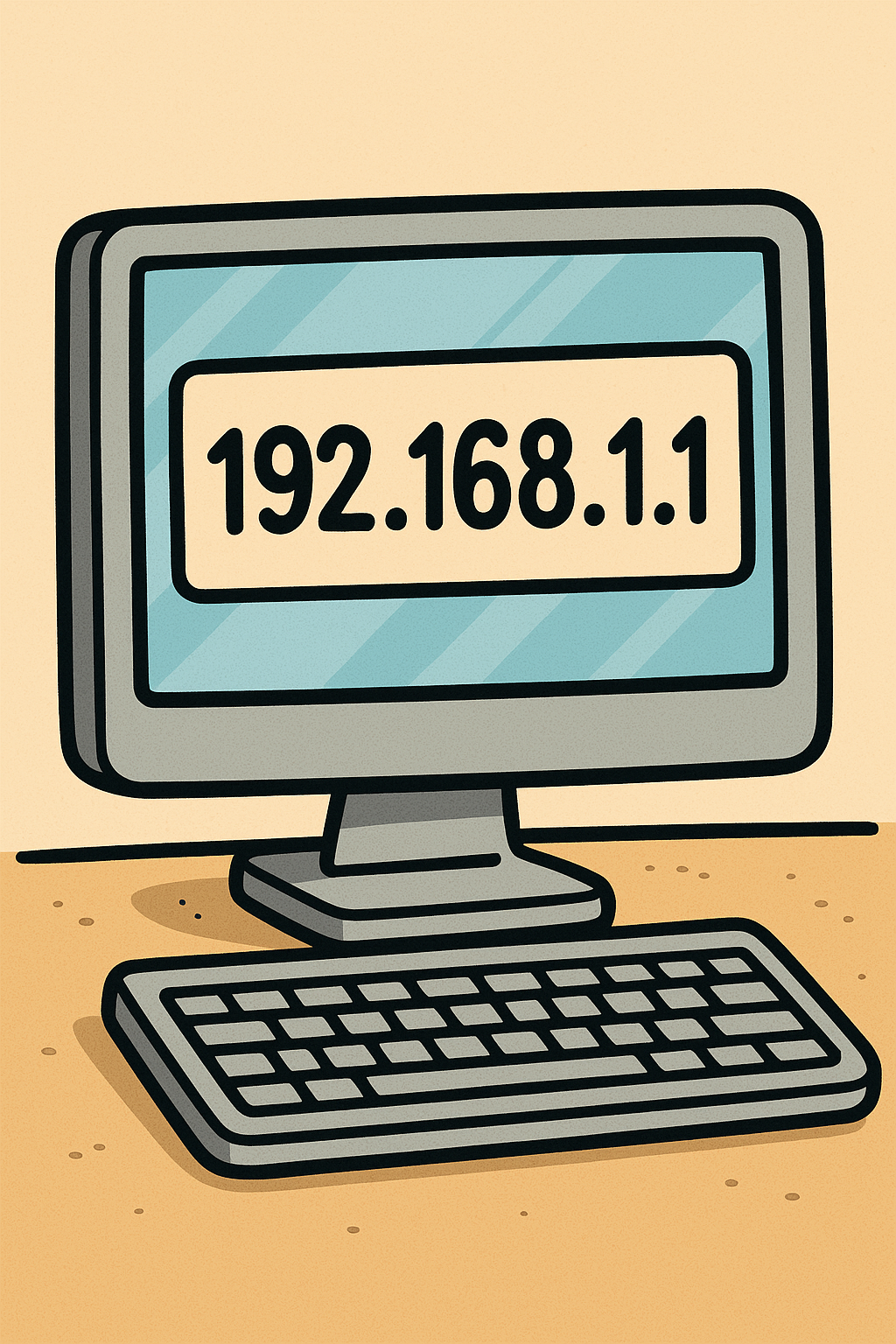What is an IP Address and How Does it Work?
Fri Jul 18 2025
|Internet ServicesLearn what an IP address is, how it works, and why it matters. Complete guide covering IPv4 vs IPv6, types of IP addresses, security risks, and protection methods.

An IP address, or Internet Protocol address, is a unique numerical label assigned to every device connected to a computer network that uses the Internet Protocol for communication. Think of it as your device’s digital fingerprint or mailing address on the vast network we call the internet. Without IP addresses, the billions of devices connected to the internet would have no way to find and communicate with each other.
Understanding the Basics: What Does IP Address Mean?
The “IP” in IP address stands for Internet Protocol, which is essentially a set of rules that govern how data is formatted and transmitted across networks. This protocol serves as the universal language that allows computers anywhere in the world to communicate with one another, regardless of their operating system, hardware, or location.
Every IP address serves two fundamental purposes:
- Device Identification: It uniquely identifies a host or network interface
- Location Addressing: It provides the location of that device within the network, enabling proper routing of data
Without these unique identifiers, sending data across the internet would be like trying to mail a letter without an address – it would simply get lost in the system.
The Evolution of IP Addresses: From IPv4 to IPv6
IPv4: The Foundation of Internet Communication
The original Internet Protocol version 4 (IPv4) was deployed in 1983 and has been the backbone of internet communication for decades. IPv4 addresses are 32-bit numbers displayed in what’s called “dot-decimal notation” – four decimal numbers ranging from 0 to 255, separated by dots (for example, 192.168.1.1).
This 32-bit structure allows for approximately 4.3 billion unique IP addresses. While this seemed like an enormous number in the early days of the internet, the explosive growth of connected devices quickly revealed the limitations of IPv4. By the early 1990s, experts were already concerned about IPv4 address exhaustion.
IPv6: The Future-Proof Solution
To address the impending shortage of IPv4 addresses, the Internet Engineering Task Force (IETF) developed Internet Protocol Version 6 (IPv6) in 1995. IPv6 dramatically expands the address space by using 128 bits instead of 32 bits, providing approximately 3.4 × 10^38 possible addresses.
To put this number in perspective, IPv6 provides enough unique addresses to assign one to every atom on the surface of the Earth – with plenty left over. This vast address space can easily accommodate the growing Internet of Things (IoT) ecosystem, where everything from refrigerators to light bulbs can have internet connectivity.
Despite IPv6’s advantages, both versions coexist today. The transition is gradual due to infrastructure requirements and the need for transition mechanisms to ensure compatibility between the two systems.
How IP Addresses Work: The Digital Delivery System
Understanding how IP addresses function is like following a package through the postal system.
- Request Initiation: When you type a website URL into your browser, your device creates a request for that website’s data.
- DNS Resolution: Your request first goes to a Domain Name System (DNS) server, which acts like a phone book for the internet. It translates human-readable domain names (like google.com) into their corresponding IP addresses (like 172.217.160.142).
- Packet Creation: Your data is broken down into smaller units called packets. Each packet contains both your device’s IP address (the return address) and the destination IP address.
- Routing: These packets travel through multiple networks, guided by routers. Each router reads the destination IP address and determines the most efficient path to send the packet toward its destination.
- Delivery and Assembly: Once packets arrive at the destination network, they’re delivered to the correct device and reassembled to display the requested content.
Types of IP Addresses: Understanding the Categories
Public vs. Private IP Addresses
Every internet connection involves both public and private IP addresses, each serving different purposes:
Public IP Addresses
- Assigned by your Internet Service Provider (ISP)
- Visible to the entire internet
- Globally unique – no two devices share the same public IP
- Used for external communication outside your local network
Private IP Addresses
- Assigned by your router for internal network communication
- Used for communication between devices within your home or office network
- Not routable on the internet
- Can be reused across different private networks without conflict
The Internet Assigned Numbers Authority (IANA) has reserved specific address ranges for private use:
- 10.0.0.0 to 10.255.255.255
- 172.16.0.0 to 172.31.255.255
- 192.168.0.0 to 192.168.255.255
Static vs. Dynamic IP Addresses
IP addresses can also be classified by how they’re assigned:
Dynamic IP Addresses
- Temporarily assigned by DHCP (Dynamic Host Configuration Protocol) servers
- Can change periodically when your router restarts or the lease expires
- Most common type for home internet connections
- Cost-effective for ISPs to manage
Static IP Addresses
- Permanently assigned and never change
- Essential for hosting websites, email servers, or other services
- Often require additional fees from ISPs
- Manually configured or specially assigned
Special Purpose IP Addresses
Several IP address ranges serve specific functions:
- Loopback Address (127.0.0.1): Known as “localhost,” used for testing network connectivity within the same device
- Broadcast Address (255.255.255.255): Used to send data to all devices on a network simultaneously
- Multicast Addresses: Used to send data to specific groups of devices
How IP Addresses Are Assigned and Managed
The global management of IP addresses follows a hierarchical structure:
- Internet Assigned Numbers Authority (IANA): The top-level authority that allocates IP address blocks to regional registries
- Regional Internet Registries (RIRs): Five organizations responsible for different geographical regions
- Internet Service Providers (ISPs): Receive address blocks from RIRs and assign them to customers
- End Users: Receive IP addresses from ISPs for their devices
This system ensures efficient distribution and prevents conflicts in IP address assignment globally.
Security Implications of IP Addresses
While IP addresses are essential for internet functionality, they also present security and privacy considerations:
Privacy Concerns
Your IP address can reveal:
- General geographic location (country, state, city)
- Your Internet Service Provider
- General browsing patterns when tracked across websites
However, IP addresses typically cannot directly reveal personal information like your name, phone number, or exact street address without additional investigation involving law enforcement and ISPs.
Common Security Threats
Distributed Denial-of-Service (DDoS) Attacks Attackers flood a target IP address with overwhelming traffic, making services unavailable to legitimate users.
IP Address Spoofing Cybercriminals use fake IP addresses to disguise their identity and bypass security measures.
Tracking and Surveillance Malicious entities can monitor online activity and gather information for identity theft or unwanted profiling.
Unauthorized Access Attempts Knowing an IP address allows hackers to attempt connections through open ports on devices.
Protecting Your IP Address
Safeguarding your IP address is crucial for maintaining online privacy and security:
Virtual Private Networks (VPNs)
VPNs are the most effective tool for hiding your IP address. They encrypt your internet traffic and route it through secure servers, masking your real IP address with the VPN server’s IP.
Other Protection Methods
- Proxy Servers: Act as intermediaries to hide your real IP address
- Firewalls: Filter incoming and outgoing traffic based on IP addresses
- Regular Software Updates: Keep systems patched against vulnerabilities
- Avoid Unsecured Public Wi-Fi: Use VPNs when connecting to public networks
- Strong Authentication: Implement robust passwords and two-factor authentication
The Future of IP Addresses
As we move forward, several trends are shaping the evolution of IP addresses:
- IPv6 Adoption: Gradual transition from IPv4 to IPv6 to support growing device connectivity
- IoT Expansion: Billions of new devices requiring unique IP addresses
- Enhanced Security: Integration of security features directly into IP protocols
- Privacy Regulations: Increasing legal protections for IP address data
Conclusion
Understanding what an IP address is and how it functions is fundamental to navigating our interconnected digital world. From the basic concept of device identification to the complex security implications, IP addresses are the invisible infrastructure that makes modern internet communication possible.
Check us out at internetservices.com today and find out which internet is best for you.



